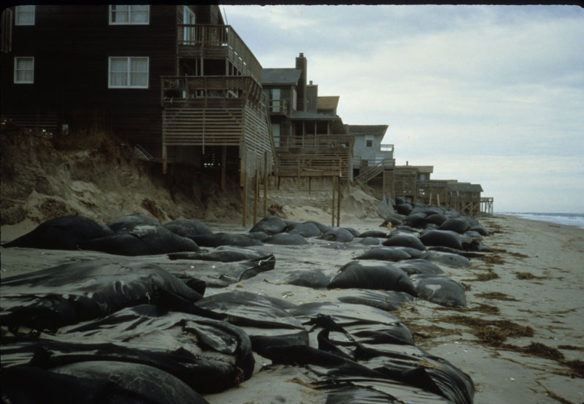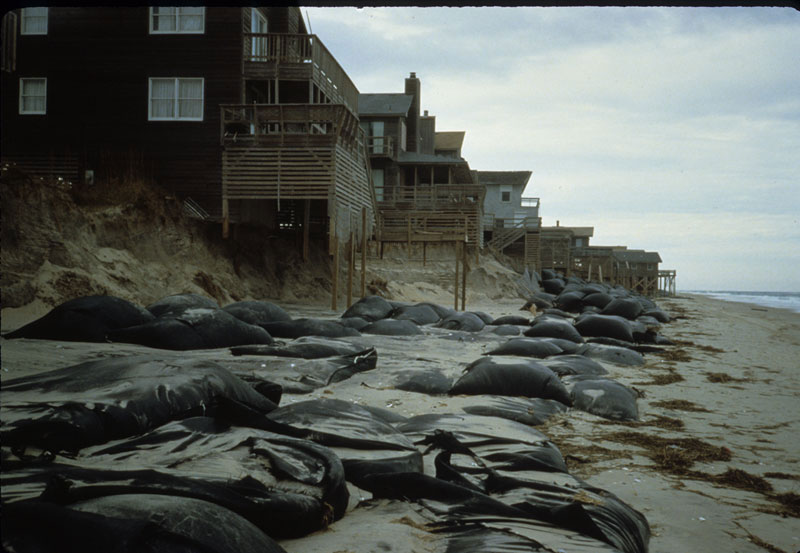
Sandbagged, trashed beach at South Nags Head, N.C. in February 1987, with some evidence of bags that have been torn or ruptured and have leaked sand. The scarp under the houses indicates that storm waves are topping the bags, and buildings were damaged or lost in the end. Captions and Photo courtesy of: © Orrin Pilkey.
Excerpts;
Sea-level rise is a national economic insecurity. According to the National Ocean Service, 39 percent of the U.S. population in 2010 lived in counties that are on shorelines. As discussions about relocation from vulnerable coastlines are surfacing, the use of federal grants to relocate populations affected by chronic flooding will not be realistic…
Read Full Article, Sun Sentinel (07-10-2018)
Sea Level Rise Will Reshape U.S. Population In All 50 States; Yale E360 (04-19-2017)
Sea level rise could cause mass migrations that will affect not just the United States’ East Coast, but reshape communities deep in the heart of the country, according to new research…
How rising seas and coastal storms drowned the U.S. flood insurance program, Yale E360 (04-19-2017)
Sea level rise and more severe storms are overwhelming U.S. coastal communities, causing billions of dollars in damage and essentially bankrupting the federal flood insurance program. Yet rebuilding continues, despite warnings that far more properties will soon be underwater…
The next five years will shape sea level rise for the next 300, study says; The Washington Post (02-20-2018)
Peaking global carbon dioxide emissions as soon as possible is crucial for limiting the risks of sea-level rise, even if global warming is limited to well below 2 degrees C. A new study analyzes for the first time the sea-level legacy until 2300 within the constraints of the Paris Agreement…
New Study Finds Sea Level Rise Accelerating; NASA (02-13-2018)
Global sea level rise is accelerating incrementally over time rather than increasing at a steady rate, as previously thought, according to a new study based on 25 years of NASA and European satellite data…









